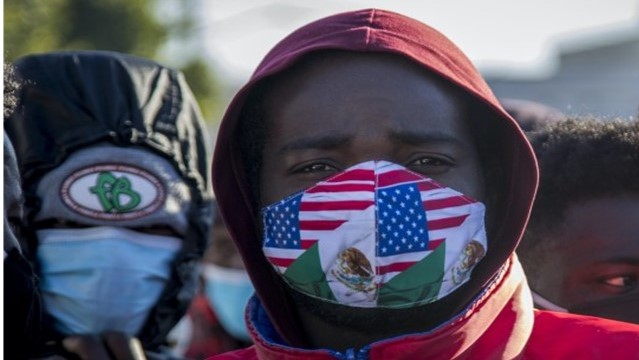
Migrants from countries far beyond Central America are increasingly arriving at the country’s borders under the Biden administration, specifically to come across the U.S.-México border illegally and risk getting caught.
By Washington Examiner – Anna Giaritelli
Jul 29, 2021
Since the start of the government’s fiscal year in October 2020, Border Patrol agents nationwide have encountered significantly more people from the Caribbean, Central Europe, and South America than last year. Although migrants from Mexico and Central America make up roughly 75% of all illegal immigrants at the northern, southern, and coastal borders, far more people from other countries are arriving. Some have traveled thousands of miles and across oceans for the chance to get into the United States, predominantly by walking across the southern border.
“We are seeing a permanent change in migration at the U.S.-Mexico border. And now it’s expanding,” said Theresa Cardinal Brown, managing director of immigration and cross-border policy at the Bipartisan Policy Center in Washington. “We’re seeing huge increases in people, not from the Central American countries and not from Mexico, which means this is now just the migration route.”
Border Patrol agents who work along U.S. borders saw a 13,951% increase in Venezuelans taken into custody between June 2020 and this June, BPC’s Grace Kluender wrote. This comes as more than 26,000 Venezuelans have fled political repression and dire economic circumstances.
From Ecuador, a country of 17 million people located on the northwestern tip of South America, more than 54,000 people have been encountered by U.S. border authorities over the past nine months — five times more than at the same point last year.
Further south in central South America, Brazilians are also leaving. Nearly 30,000 Brazilians were encountered at the border, compared to fewer than 9,000 the previous year. Last June, just 80 Brazilians were apprehended. The 6,678 Brazilians seen last month is an 8,248% increase. The coronavirus pandemic hit Brazil harder this year than last, prompting domestic crises that citizens are attempting to flee.
Cuban apprehensions increased from 14,000 as of June 2020 to more than 26,000 last month. Migration from Haiti is up 2,906% in the same period.
More than 34,000 people from the Philippines and 4,369 Romanians were stopped at the border. The “other” category of migrants, whose home country could not be determined, doubled to more than 37,000 this year.
While the change in migration patterns is obvious, Brown said, the federal government is focused on responding rather than planning. For example, while the Border Patrol has responded to this 21-year high in illegal immigration at the border by putting up tents to hold and release people from custody, it ought to make plans to deal with it if it continues or worsens.
The Biden administration’s focus on resolving the “push” factors that prompt people from El Salvador, Guatemala, and Honduras to migrate to the U.S. also needs to change to include factors that prompt people from other countries to come, Brown said. Otherwise, Central American migration will drop, but global migration to the U.S. will continue to rise.
“What about Nicaragua? What about Brazil and Venezuela? What about Haiti? What about Ukraine and Romania? And Congo. What are the root causes there? How are you going to manage that?” Brown said.
…
Read More: Washington Examiner – Migrants arrive to US border from all over the world: ‘We are seeing a permanent change’
…

